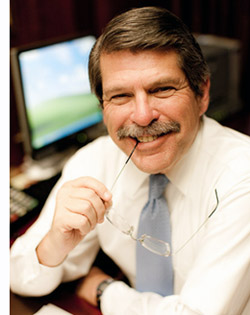Let’s fix this elections mess
February 18, 2010
 Voters in parts of the San Fernando Valley may cast ballots four times this year for the same office–with two of those votes coming in a single day.
Voters in parts of the San Fernando Valley may cast ballots four times this year for the same office–with two of those votes coming in a single day.
No one loves elections more than I do, but we all know it’s possible to get too much of a good thing.
This bizarre case of election overkill going on now in the 43rd Assembly District is the latest manifestation of the growth of special “vacancy elections” in Los Angeles County and throughout California.
The need for these extra elections is driven by term limits, as termed-out officials leave one post early after winning election to the next. And it’s becoming clear that the increasing need for such elections saddles taxpayers with burdensome costs and runs the risk of driving up voter fatigue and apathy.
Ground zero right now is the 43rd District, which includes Glendale, Burbank and a slice of the San Fernando Valley. Voters there are preparing to go to the polls on April 13 to pick a successor to serve out the final months of the Assembly term of Paul Krekorian, who left to join the L.A. City Council.
And April 13’s election is just the beginning. If no candidate gets a majority that day, there’ll be a runoff on June 8.
But it just so happens that June 8 is the same day as the regular primary election, in which there’ll be –you guessed it – a second slate of candidates on the same ballot vying to win the next two-year term that begins in December.
So in effect, voters would have to make a short-term pick and a long-term pick on the same ballot. And the list of names may well overlap. Talk about confusing.
This ordeal-by-ballot-box would finally end in November, when exhausted voters could select Krekorian’s long-term successor in the general election.
There are two basic problems with this system. It does a disservice to taxpayers by driving up cost. The April 13 vote, for instance, may cost us an extra $1 million. And it does a disservice to voters because holding elections at unexpected times of the year depresses turnout.
So what’s to be done? If we could fix the problem locally, we would. But it’s state law that dictates how and when elections are run, and the county can’t unilaterally make improvements. The onus is on the Legislature and the governor.
One place they could start is by doing a better job of covering expenses related to the elections. The state does cover some costs, but the current system is cumbersome and reimbursement is spotty. We in Los Angeles County have paid more than $12 million for special vacancy elections in the past decade, but only got about $4 million back from the state. That needs to change. So earlier this month State Sen. Curren Price introduced a bill that would guarantee future payments in all special elections.
Clearly, though, for most taxpayers the bigger issue is not who foots the bill, but how to fix the underlying issues that got us here.
And for some fresh thinking on that, we need look no further than our own Registrar-Recorder/County Clerk, Dean C. Logan.
Logan, a nationally-recognized expert on election policy and reform who’s been supervising L.A. County elections since he was appointed to his post in 2008, argued persuasively for change in an opinion piece this week in the Los Angeles Times. I completely agree with his contention that by holding too many special elections we drive up both taxpayer costs and voter discontent.
His suggestions for solutions range from holding special elections only on already scheduled election dates to instant-runoff voting. There’s even the option of using a hybrid system, as some states do, to allow short-term appointments to fill vacancies until consolidated elections can be held.
Personally, I’m not yet certain which of these suggestions will ultimately be most effective. But I’m sure of one thing. In a time of strained county budgets and alienated voters, doing nothing is not an option.
Posted 2/18/10












 405 bridge work causes a stink
405 bridge work causes a stink





